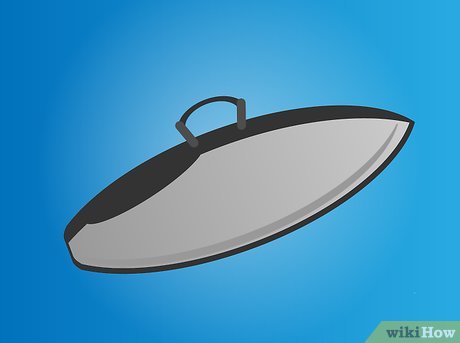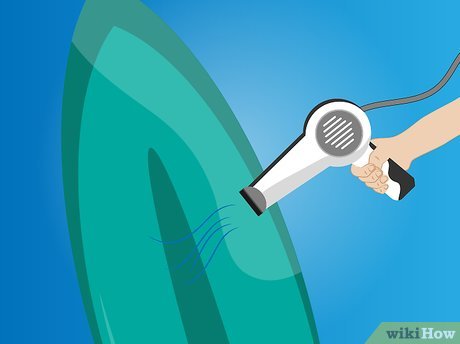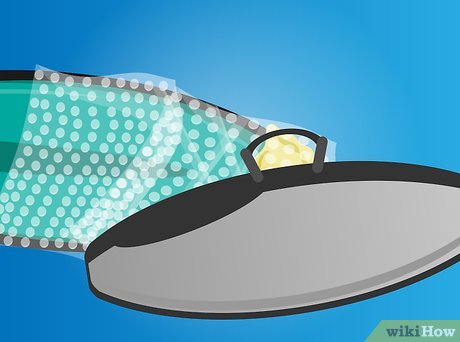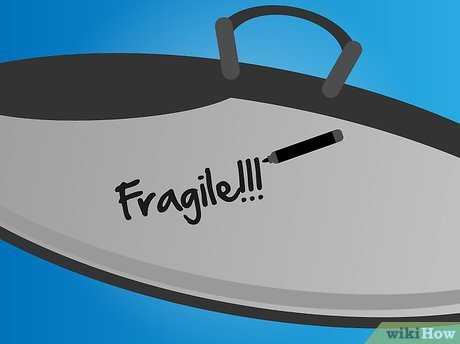Are you tired of getting the feeling that the cargo hold contains a bunch of surfboard joyriding gorillas waiting to dent your surfboard the moment it’s loaded? Rather than worry the entire flight about how your board is faring and whether or not the vacation ahead is set to be a good one, the answer lies in packing the surfboard well. This article takes you through several ways to protect your board so that you can arrive ready to disembark and head straight for the surf.
Steps
1Buy or borrow a heavy-duty, appropriately sized board bag. To increase the odds of ding-free travel, buy a board bag. While some people claim you can travel safely without a board bag, it’s debatable and is certainly a moot point when you receive a damaged board at the other end of your flight. Prevention is better than cure:XPurchase a bag that is six inches / 15 centimeter (5.9 in) longer than your longest board; this additional length leaves room for cushioning.Consider how many boards you’ll be traveling with on this trip and in the future. Obtain a bag that will accommodate your needs. Board bags are available with compartments that enable you to carry more than one board safely.Think about what kind of bag would be most convenient to travel with. For example, you may wish to get a bag with wheels so that it’s easier to bring with you through long airport queues and getting and from your accommodations.A plastic hardcover board bag will be most effective at protecting your board, but also the most heavy and bulky luggage to travel with.
2Remove the fins from your board. If you have removable travel fins such as FCS, O’Fish, or Excel Fins, it makes good sense to remove them to prevent the possibility of catching on surrounding objects. A flatter object travels more soundly.XWrap the removed fins in a towel and keep them with your board, along with the fin key. If you forget the fin key, your efforts are in vain, so double check it is in there before zipping up.If you have standard fins, place a fin box around the fins to protect them. Fin boxes are not expensive, but if necessary, you can make your own by using polystyrene blocks – ask for these at electrical stores and warehouses.
3Remove the old wax off your board. Skipping this step will usually cause your cold water surf wax to melt all over your board bag when you land in the tropics.
4Cut foam pipe insulation covering and duct tape it down the rails of your board. Pipe covering is available at most hardware stores.XCut a slit down one side of the pipe insulation.Secure the insulation to the railings with duct tape or shrink wrap.
5Protect the ding prone areas of your board such as the nose and tail. Do this by duct taping items that you’re already traveling with, such as wet-suits, towels, and clothes around the board. Bubble wrap is also a great choice as it is lightweight and cushions impacts well. Look for bubble wrap with the larger bubbles.XIf you’re using pipe insulation for the rails, you can use it to reinforce the nose and tail as well. Secure with duct tape or shrink wrap.Cut a “bend relief” notch at the center of the nose and tail so that the insulation doesn’t bunch up.You can also run insulation along the center of the board for additional protection.
6Slide the board into a sock or bubble wrap bag if you have one. This is yet another layer of protection that will go inside the full board bag.
7Place the protected board in your board bag. Throw in some extra clothes and padding for that extra bit of protection, especially at the ends or any ding-prone parts. Don’t forget the removable fins and the fin key, if applicable.XIf you’re packing more than one board, there are a few different ways you can arrange them:If the fins are removed, place the the largest board on the bottom, with all boards facing the same direction and the rockers running the same way.If the fins aren’t removable, place each board nose to tail all deck up, to even out the bulge from the fins and fin blocks on each side of the bag (rockers still run in the same direction). An alternative is to offset each board in the bag, but this is only convenient with two boards and an extra long bag. Lay both boards deck down in the same direction; put the largest board on the bottom and stagger the next.
8Write “top load” or “fragile” on the bag with a marker or acrylic paint. You’re set to go and reach your vacation destination with the board in one piece. All you need to do now is to stay healthy on the plane!








